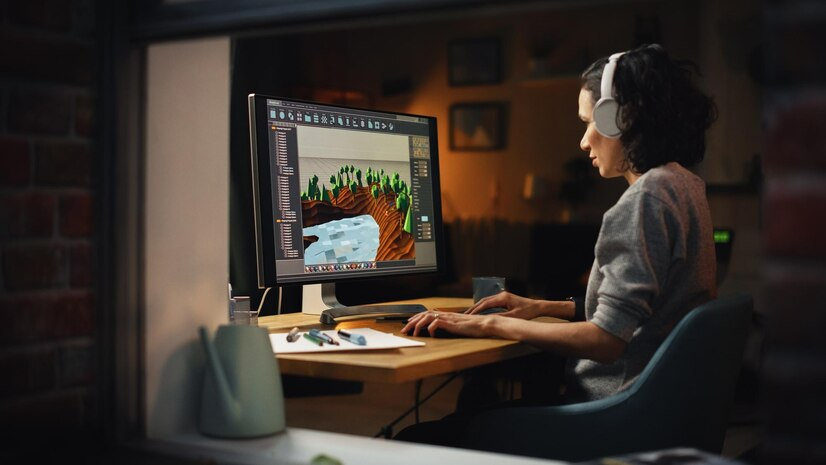In the ever-evolving world of animation, mastering fundamental techniques is crucial for any animator aiming to create captivating, high-quality animations. Whether you’re working in a high-end animated video company or offering 2D animation services independently, a solid understanding of essential techniques will set your work apart and help you achieve stunning results.
1. The Basics of 2D Animation
2D animation involves creating movement in a two-dimensional space, typically by using sequential images or frames. This technique can be used for a variety of purposes, including TV shows, films, web content, and advertisements. At its core, 2D animation relies on principles such as timing, spacing, and the manipulation of characters and objects to convey a sense of motion.
Key Concepts:
- Frame-by-Frame Animation: Traditional approach where each frame is drawn individually.
- Tweening: The process of generating intermediate frames between two keyframes to create smooth transitions.
- Rigging: Creating a skeletal structure for a character that allows for easier manipulation and animation.
2. The 12 Principles of Animation
Originally developed by Disney animators Ollie Johnston and Frank Thomas, the 12 principles of animation are fundamental techniques that enhance the realism and appeal of animated characters and objects. Understanding and applying these principles can dramatically improve the quality of your animations.
1. Squash and Stretch
Squash and stretch give objects and characters a sense of weight and flexibility. By exaggerating movements, you can convey emotions and physicality more effectively.
2. Anticipation
Anticipation prepares the audience for an action. For example, a character might bend their knees before jumping, which makes the jump more believable and impactful.
3. Staging
Staging involves presenting an idea so that it is clear and easily understood. This includes framing, lighting, and positioning of characters to direct the viewer’s focus.
4. Straight Ahead Action and Pose-to-Pose
Straight ahead action involves drawing frame-by-frame from start to finish, while pose-to-pose involves creating key poses first and filling in the in-between frames. Both techniques have their advantages depending on the desired outcome.
5. Follow Through and Overlapping Action
Follow through ensures that parts of the body or objects continue to move after the main action has stopped, while overlapping action refers to different parts of a character moving at different rates. Both add realism and fluidity to animation.
6. Slow In and Slow Out
This principle deals with the gradual increase and decrease of speed in an action. It helps in making movements more natural and less mechanical.
7. Arcs
Most natural movements follow a curved path or arc. Implementing arcs in animation can make motions look smoother and more lifelike.
8. Secondary Action
Secondary actions are additional movements that support the main action, such as a character’s hair or clothing reacting to their movement. These details add depth and realism.
9. Timing
Timing refers to the number of frames used for an action and is crucial for achieving the desired speed and impact. Proper timing ensures that animations are neither too fast nor too slow.
10. Exaggeration
Exaggeration enhances the impact of an action and emphasizes certain aspects to make them more visually appealing or humorous.
11. Solid Drawing
Solid drawing involves creating well-constructed and dimensional characters and objects. This principle ensures that animations look three-dimensional and realistic.
12. Appeal
Appeal is the quality that makes a character or object interesting and engaging. It’s about creating designs and animations that captivate and resonate with the audience.
3. Tools and Software for 2D Animation
To bring your 2D animations to life, it’s essential to use the right tools and software. Different programs offer various features and capabilities, so choosing the one that best fits your project needs is crucial.
Popular Animation Software:
- Adobe Animate: A versatile tool for creating interactive animations and vector graphics.
- Toon Boom Harmony: Industry-standard software known for its robust animation and rigging capabilities.
- TVPaint: A powerful tool for traditional hand-drawn animation with extensive brush and texture options.
- Krita: An open-source program offering strong animation features and a range of artistic tools.
4. Understanding Animation Styles
Different animation styles can greatly influence the look and feel of your project. Whether you’re working with an animated video company or providing 2D animation services, selecting the right style is key to achieving your creative vision.
Common Styles:
- Traditional Animation: Hand-drawn frames that offer a classic, artisanal feel.
- Vector Animation: Utilizes geometric shapes and lines, often used for web and mobile animations.
- Cut-Out Animation: Involves moving pieces of flat artwork to create animation, often seen in educational content and television.
5. Applying Animation Techniques in Different Contexts
Understanding how to apply animation techniques across various contexts and platforms is essential. For example, animations used in marketing materials might differ from those in entertainment or educational content. Customizing your approach based on the purpose of the animation will help achieve the best results.
In Marketing:
Animations should be engaging and concise, effectively communicating the brand message or product features. Techniques such as motion graphics and kinetic typography are often employed.
In Entertainment:
Characters and storylines need to be richly developed, with a focus on emotional expression and storytelling. Techniques like squash and stretch and secondary action are crucial here.
In Education:
Animations should simplify complex information and present it clearly. Educational animations often use visual metaphors and straightforward designs to aid understanding.
6. Trends in 2D Animation
The field of 2D animation is constantly evolving, with new trends shaping the industry. Staying updated with these trends can help you remain competitive and offer innovative solutions in your 2D animation services.
Current Trends:
- Hybrid Animation: Combining 2D and 3D elements to create unique visual effects.
- Flat Design: Utilizing minimalistic, flat visuals that are easy to understand and visually appealing.
- Hand-Drawn Aesthetics: Incorporating elements of traditional hand-drawn animation into modern digital workflows.
7. Challenges and Solutions
Every animator faces challenges, whether it’s meeting tight deadlines or achieving the desired visual effects. Knowing how to tackle these challenges effectively can improve your workflow and the quality of your animations.
Common Challenges:
- Consistency: Maintaining consistency in character design and animation can be challenging. Using reference sheets and animation guides can help.
- Time Management: Balancing quality with deadlines is crucial. Effective planning and breaking down tasks can streamline the process.
- Technical Issues: Software glitches and compatibility issues can arise. Regular updates and having backup systems in place are advisable.
8. Conclusion
Mastering 2D animation techniques is essential for creating captivating and professional-quality animations. Whether you’re part of an animated video company or offering 2D animation services, understanding and applying these techniques will enhance your skills and contribute to the success of your projects. By staying informed about industry trends and continuously refining your techniques, you’ll be well-equipped to tackle any animation challenge that comes your way.


